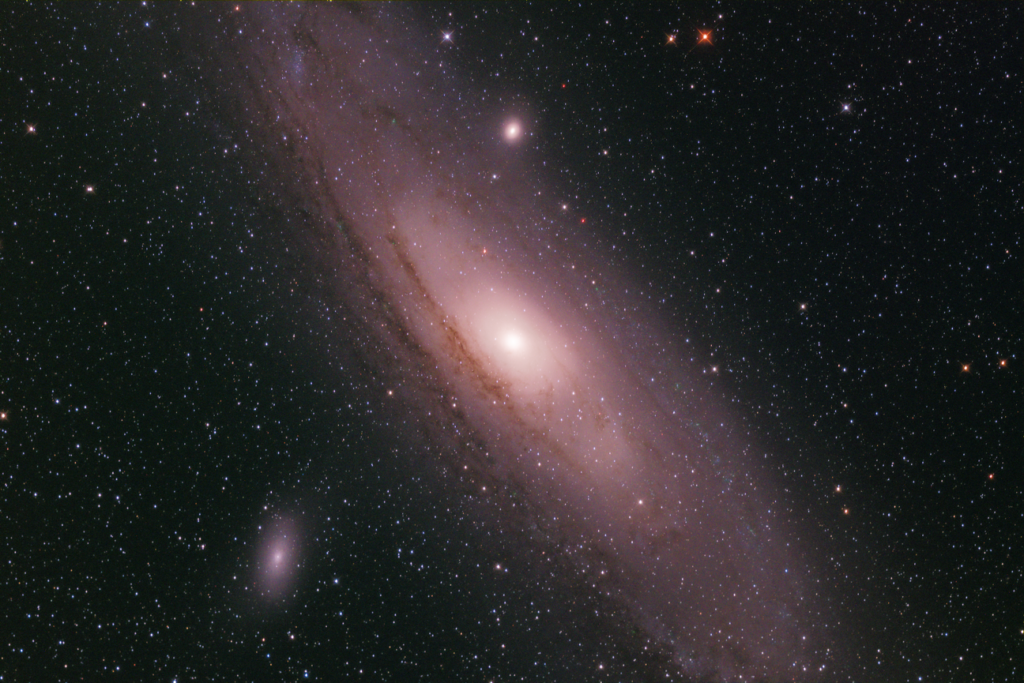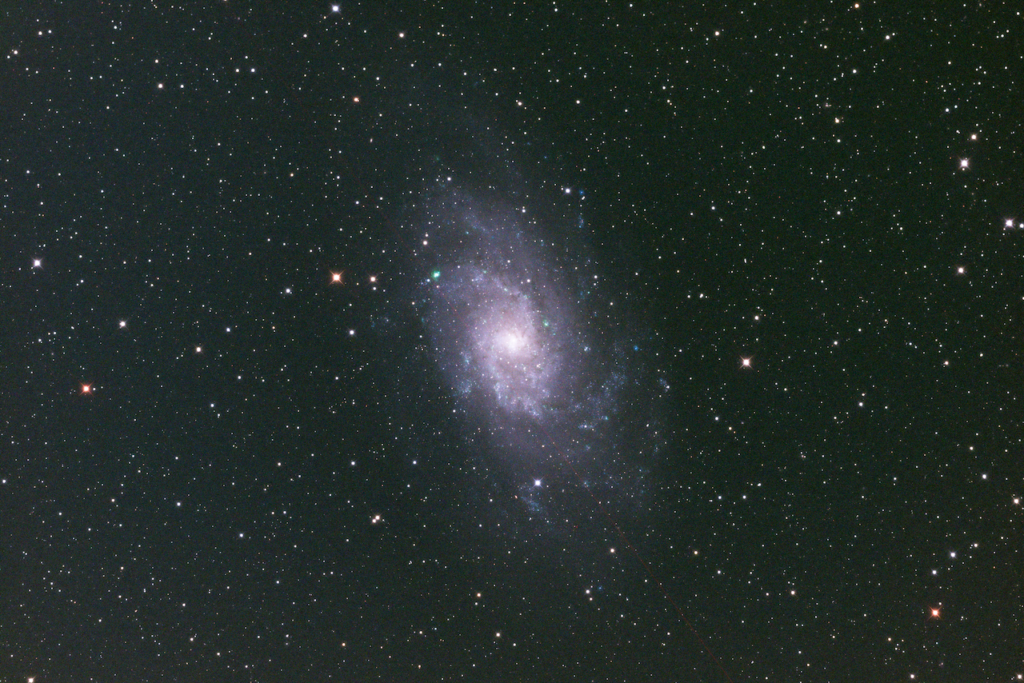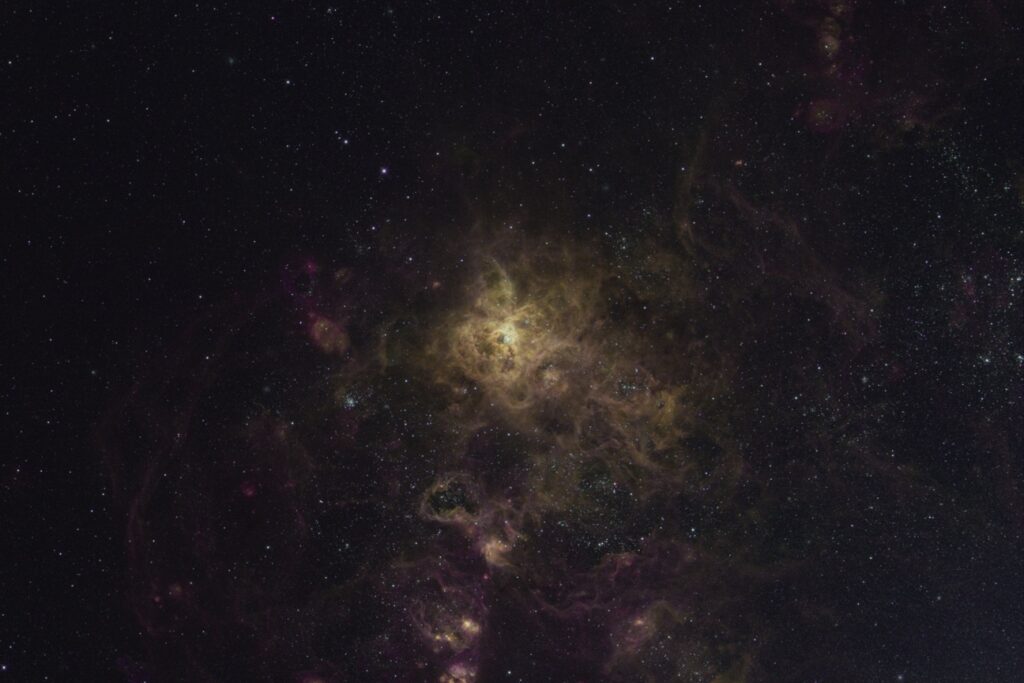- Home
- Classes
- Astro 1 Spring 2024
- Physics 134 – Observational Astrophysics – Fall 2023
- INT 86TN Planetary Defense – Spring 2024
- Symmetry & Aesthetics in Contemporary Physics
- INT 184 – PL Interdisciplinary Honors Seminar – Weapons of Mass Destruction – Spring 2013
- Physics 150 – Modern Design and Fab – Fall 2019
- Physics 4 – Winter 2023
- Physics 141 – Optics – Spring 2019
- Physics 145L – Astrophysics Research
- Physics 199 – Independent Research
- Projects
- Facilities
- People
- Net
- Outreach
- Misc
- Papers
Physics 134 – Observational Astrophysics – Fall 2023
Meeting time: MW 12:30-13:45 Broida 5223
Prof Philip Lubin
Office – 2015 C Broida
Office hours: TBD
Class contact email address – lubin@.ucsb.edu
TA: Jeonghwa Kim
Office Hours: Generally after class in the same room as our class
e-mail: jeonghwa_kim@ucsb.edu
Learning Asst: TBD
e-mail:
Textbook: To Measure the Sky – F. Chromey – Cambridge Press – 2nd edition
Final presentations:
Tue Dec 12 from 12-3 in class
Example Phys 134 projects – F 22 class
An Astrometric Observation of Binary Star Systems STF 42AB and STF 1169AB
Astrometry of Binary Star Systems Astrometry of Selected Binary Star Systems
Constraints on Secular Perturbations in Impact Parameter Amongst Kepler Planets
Development of a Photometry Pipeline for Las Cumbres Observatory Data in Python
HR Diagrams for the Eagle Nebula and the Little Beehive Cluster
Light Curve of a Type II Supernova
Measuring different types of Cepheid Variables
Measuring the Separation and Position Angle of Two Double Stars STF 1169 AB and STF 42 AB
Observation and Period-Luminosity Relationship Analysis of Cepheid Variable Stars
Photometric Analysis of Three Prominent Stella Clusters; Messier 2 (NGC 7089)
Beehive Cluster (NGC 2632), and Tarantula Nebula Cluster (NGC 2070)
Photometry of Recent Type Ia Supernova – SN 2022wpy
Pulsars and their Surrounding Nebulae Energy Transfer Calculations and Data Analysis in Python
SN 2022wsp A Type II-P Supernova Through Light Curve Analysis
Example Phys 134 projects – S 23 class
Short-Period Eclipsing Binary KIC 3833859
Study of Partial Tidal Disruption Events
Studying TDE candidate ASASSN-18ul_AT2018fyk
Estimating Photometric Redshifts Using Template-Based and Empirical-Based Methods on Faint Galaxies
An Examination of Various Supernovae-Classification and Light Curves
Computing Properties of Binary and Double Stars
Discovery of WASP-14b via Transit Photometry
Double Stars and Stellar Binary Systems An Astrometric Analysis
Exoplanet Detection via Transit Photometry
Finding WASP-14b with Transit Photometry
Globular vs. Open Cluster HR Diagrams
Ground-based Visible Light Photometry of Supernova
HD 126053 A Spectroscopic Study
Hertzsprung-Russell Diagrams For Clusters M13 and M6
Hertzsprung-Russell Diagrams of Two Messier Clusters
HR Diagrams and Clustering Analysis of Open Cluster M6 and Globular Cluster M13
HR Diagrams of The Beehive Cluster (M44) and The Great Cluster in Hercules (M13)
Light Curve Analysis of AT2023hpb
Light Curve Analysis of Supernova AT2023hpb
Light Curve and Spectroscopic Analysis of Cygnus X-1
Light Curves of a Type II Supernova AT2023hpb
Light Curves of Supernova AT2023hpb
Orbital Period and Light Curve Analysis of Cygnus X-1
Image processing program often used in the class – PC (Win) for Mac see link below:
This AstroArt program is very useful if you plan on doing longer term work in astro image processing but it is not free. The demo (very useful) is free.
It is installed on UCSB machines in the class.
Astro Art for astronomical image processing
Running Astro Art on a Mac:
https://www.astroart-forum.net/forum/viewtopic.php?f=4&t=382
Running Astro Art image processing code remotely using UCSB machines:
http://web.physics.ucsb.edu/~pcs/apps/accessconnectwise.html
Useful Free Programs:
DS9 – Astronomical Image Processing
http://ds9.si.edu/site/Download.html
Astro Image J – Astronomical Image Processing
https://www.astro.louisville.edu/software/astroimagej/
FITS Liberator – turns FITS files into common image formats
https://www.spacetelescope.org/projects/fits_liberator/
GIMP – Similar to Photoshop
In The Sky – Astronomical Sky Plotter of objects
https://in-the-sky.org/graphs.php
Skymaker – image simulation software
https://www.astromatic.net/software/skymaker
Astrometry.Net – astrometry analysis of images – identifies and locates the position of your objects
Useful textbook:
Observational Astrophysics – P. Lena
https://www.springer.com/gp/book/9783642218149
An Introduction to Observational Astrophysics – Mark Gallaway – Springer 2016
Available on Amazon as paperback and eBook
Useful paper with comparison of ground and space detection – oriented towards SETI but applicable to all observing:
“The Search for Directed Intelligence”
REACH – Reviews in Human Space Exploration – Vol 1, 20-45, March 2016
http://arxiv.org/abs/1604.02108
Astronomy Picture of the Day
https://apod.nasa.gov/apod/astropix.html
https://en.wikipedia.org/wiki/Astronomy_Picture_of_the_Day
LCO Resources
- Instruments
lco.global/observatory/instruments/
- Exposure and SNR Calculator
exposure-time-calculator.lco.global/
- Visibility Calculator
https://lco.global/observatory/visibility/
- Filters
lco.global/observatory/instruments/filters/
- BANZAI – Data Processing Pipeline
lco.global/documentation/data/BANZAIpipeline/
- Recent Science and Educational Research (great for ideas)
- Spacebook – Learn Astronomy (good overview)
- Decompressing FPacked data – converting .FZ files to .FITS
https://lco.global/education/observing/fpack/
LSST – Rubin Observatory – Science Book
https://www.lsst.org/scientists/scibook
Hubble Space Telescope Legacy Database – HST FITS Images and spectra
Siena Galaxy Atlas – 400,000 galaxies – SGA 2020
https://arxiv.org/abs/2307.04888
The SGA-2020 uses optical grz imaging over ≈20,000 deg2 from the DESI Legacy Imaging Surveys Data Release 9 and infrared imaging in four bands (spanning 3.4-22 μm) from the six-year unWISE coadds.
It is more than 95% complete for galaxies larger than R(26)≈25 arcsec and r<18 measured at the 26 mag arcsec−2 isophote in r-band.
The atlas delivers precise coordinates, multi-wavelength mosaics, azimuthally averaged optical surface brightness profiles, model images and photometry, and additional ancillary metadata for the full sample.
Aladin Lite Sky Atlas
https://aladin.u-strasbg.fr/AladinLite/
Observable Asteroids and Comets and other objects
https://ssd.jpl.nasa.gov/tools/sbwobs.html#/
Simbad Database
http://simbad.u-strasbg.fr/simbad/
Example search for SDSS 20J091557.78:
Exoplanet Transit Database for Occultation
http://var2.astro.cz/ETD/predictions.php
Asteroids and Comets
https://ssd.jpl.nasa.gov/horizons.cgi
https://cneos.jpl.nasa.gov/sentry/
Supernova Databases
Latest supernovae by Rochester Astronomy at Purdue University:
http://www.rochesterastronomy.org/supernova.html
Transient Name Server – generally useful for searching known transients
https://wis-tns.weizmann.ac.il/
Example for SN 2019slu
https://wis-tns.weizmann.ac.il/object/2019slu
Astrophotography – How to make a beautiful tri-color image
Astrophotography post-processing
Examples of class Tri-Color astronomical imaging – Right click and Open in New Tab to view full image
60 MP monochrome CMOS FPA (1 e read noise) on Planewave Delta Rho 350



DSLR Astrophotography – Sherwin Shi – ZIP files – download to access images
Homework – HW will be assigned as needed. Submit on Canvas.
Every day – look at the APOD (Astronomy Picture of the Day) – https://apod.nasa.gov/apod/astropix.html
HW 1 – Due Oct 9 – Form 2-3 person team, write up 2 page paper on why this is a interesting project and suitable for the class and present research project (as a team) in 5 min PPTX format to entire class
HW 2– Due Oct 16 – Astro Art tutorials (use class or PSR – some can be done on Astro Art demo (free) – submit one PDF of all relevant tutorial screen shots.
HW 3 – Due Oct 30 – UAP Research – HW
HW 4 – Due Oct 30 – Physics 134 HW 1-a
HW 5 – Due Nov 13 – bbColors bbColors-a (see below)
Final Exam
Each team will present a 20 minute talk summarizing all of all of their work. Split the time , as usual, between each team member to allow everyone to speak.
Introduce the project(s) with some background as to what you are doing and why it is important and what the larger context in astronomy is for this subject.
Final Research Paper – Have ready by the final and place in your folder under a sub directory call “Final Research Paper”. The paper should be about 20 pages long and should include the following sections:
- Introduction and theory of project
- Historical background
- Larger context of importance of the research
- Data collection including any problems you had
- Summary images of your data (all your good data (images, plots, code etc)) should be placed in dir with the paper under a sub (sub) dir “Data”
- Data analysis including plots
- Error analysis as appropriate
- Summary and conclusions including what you would do next time if you were to do it “all over again”
Class Gmail account (will not be used this quarter):
User: ucsb.physics134
Pass: given in class
Class Data Server – UCSB Box (this is where your LCO images will appear and where you will put your PPTX or equivalent presentations.
Make a sub directory with your full name (first and last). DO NOT delete other peoples folders!
sign-in with UCSB Net ID
Stellarium – http://www.stellarium.org/ – this is very useful in planning your observations.
Events and Links (Note that due to the current CV situation, most of these are remote and may be at different times/ days this quarter)
Physics Department Colloquium: Tuesdays at 4:00 in Broida 1640
LCOGT Colloq (check schedule) usually Thur 3:30-4:30 at the LCOGT facility – BUT van to colloq leaves from Physics lot at 3:15 and you must sign up to get room on the van. Van returns you to Broida after talk.
LCOGT Colloq Schedule (must sign up for van)
LCOGT – Las Cumbres Observatory
LCO – Exposure Time Calculator
Available filters on 0.4m LCO telescopes:
- Bessel-B
- Bessel-V
- Clear
- PanSTARRS-Z
- PanSTARRS-w
- SDSS-gp
- SDSS-ip
- SDSS-rp
- SDSS-up
Blackbody and Color temperature HW exercise is here:
Blackbody Calculator:
https://www.spectralcalc.com/blackbody_calculator/blackbody.php
Observing Projects
Each student will do several observing projects. We encourage groups of students to work together. A maximum of three students per groups. Single student projects are also possible.
You should have two or three science-oriented observing projects and no more than one astrophotography
(pretty picture) project (three projects in all). Each group or student will give a 5 minute presentation on ONE of each of their projects. This is not
optional. In general this is done during class meetings.
Here is an example request form to submit to the TA, who will then submit your request to LCO and return the data to you:
Observation Request Sheet template
Ongoing Information
Class Notes
The most up to date version of the class notes (different than the observation instructions, below)
can be found below. Copies should be available on the class drive, but they cannot be guaranteed
to be up to date.
Class Notes available here:
Aperture Photometry Notes:
Lectures
Large Scale CCD and CMOS – Phys 134 – b
Center for Adaptive Optics Lectures
https://www.ucolick.org/~max/289/
Astroart Labs and Tutorials
In the newer versions of AstroArt there are tutorial in the Help area under “Quick Start Tutorials”. Please use the newer version which is installed on the class computers.
| Tutorial #1 Noise reduction.
Tutorial #2 Dark frame and flat field correction. Tutorial #3 Blinking two images. Tutorial #4 Deconvolution. Tutorial #5 Aligning and summing images. Tutorial #6 Trichromy and LRGB. Tutorial #7 Image processing on comets. Tutorial #8 Mosaic. Tutorial #9 Astrometric and photometric reduction. Tutorial #10 FFT. Tutorial #11 Masks. Tutorial #12 Camera control. Tutorial #13 Scripts. |
In the older version to do the Astroart Labs, follow the tutorial given here (http://users.libero.it/mnico/labindex.htm). You should be able to do labs 1-3,5, and 6,
but please do check out the others and read what they have to say. A few of the commands
mentioned have been deprecated since this was made, but you should be able to find your way
around anyway. The images needed are present in the Astroart Labs directory on the class drive.
If they are corrupted, you can recreate them with the zipped files present.
Observing with LCOGT’s BOS Telescope
See the quick guide linked below. After your observation is made, the relevant FITS files will be put
on to the class server account. Simply upload/download your files to your directory on the class drive and begin working with them as you please.
To add an observation, click on the “Google Calendar” button, log in on the class gmail account,
and make your edits there. Be careful not to disturb other observations!